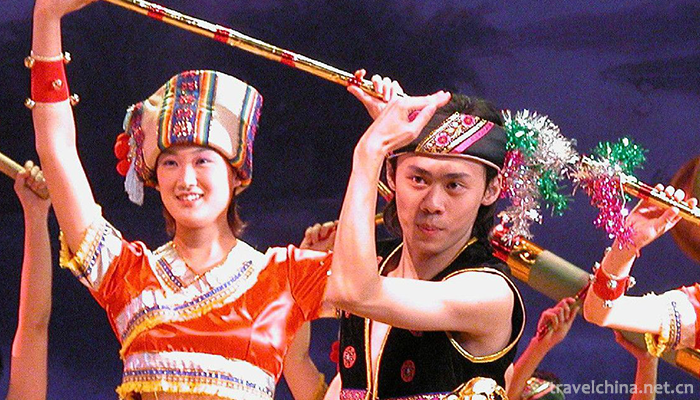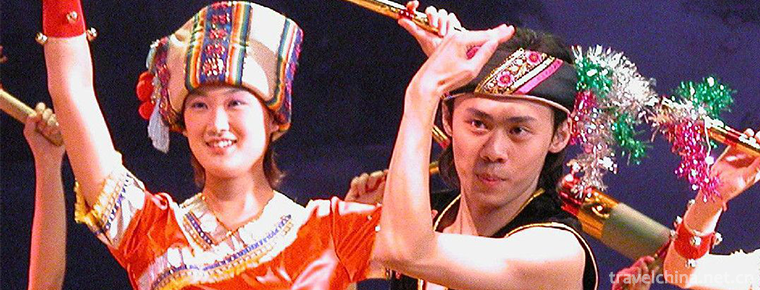Mi Luo Tuo
Mi Luo Tuo
Milotta is a myth and ancient song spread in the Yao nationality inhabited areas of Du'an and Bama in Guangxi. It integrates myth, creation and hero. It describes the heroic achievements of the goddess Milotta in opening up the world and creating human beings. In order to better inherit the traditional culture of the Chinese nation, Keziquan participated in the UNESCO Convention on the Protection of Intangible Cultural Heritage. Through years of protection and promotion, the Bama Spring Goddess Milotta and Zhuzhu Festival were included in the national intangible cultural heritage.
On May 23, 2011, the "Miluotuo" declared by Duan Yao Autonomous County of Guangxi Zhuang Autonomous Region was listed in the third batch of national intangible cultural heritage list with the approval of the State Council.
historical origin
Yao tribes are very complex, and there has been no uniform standard for the division of Yao tribes in all walks of life. According to the "branch - Branch - branch" division, the Yao people can be roughly divided into four branches, 16 branches and 39 branches. The four branches are Mian Yao, Bunu Yao, Lajia Yao and Pingdi Yao.
Milotta is a pioneering ancient song of the second largest branch of the Yao people who call themselves "Bunu". It has been sung continuously for thousands of years and is deeply loved by the Yao people. Because the Yao people only have their own national language in their history and have no written language, this ancient ballad is handed down orally by the Yao people and handed down from generation to generation.
Causes
The unique national history has created a unique national culture. Bunuyao has also created a brilliant national culture in the process of creating his own history. The Ancient Song of Milotta is a bright pearl in the treasure house of Bunuyao culture. In her childhood, due to the limitations of understanding natural phenomena such as heaven, earth and everything, Bunuyao people had fantasies. They used fiction to explain natural phenomena that they could not explain. They also used legends to describe the process of national historical development. In this way, the Ancient Song of Miluotuo was created by Bunuyao ancestors in the form of myth and legend, which reflected Bunuyao ancestors'understanding of the origin of all things and human beings.
historical background
The protagonist of Milotta Ancient Song is a woman, a goddess who created all things and created human beings. It tells the myths and legends of matriarchal society, but there are also traces of the transition to patriarchy. Therefore, the production period of Milotta Ancient Song should be a female-centered matriarchal society and a historical period of the transition from matriarchy to patriarchy.
First generation region
According to expert textual research, Bunuyao and "Jiuli", "Sanmiao", "Nanman" in Chinese history
” Originally, they are part of these tribes. "Jiuli" is a large prehistoric tribe, a tribal alliance coexisting with the Yellow Emperor tribal alliance and the Yandi tribal alliance in ancient times, and was defeated by the Yandi and Huangdi tribal alliance. "Jiuli" originated in the Central Plains, that is, the middle and lower reaches of the Yellow River, so Bunuyao originated in the Central Plains. In The Ancient Song of Milotta, the place where Milotta made human beings is the place named Rali of Yao nationality. Some experts and scholars say that Rali is in Luoyang area of Henan Province. Therefore, the origin of Milotta Ancient Song should be the Central Plains, that is, the middle and lower reaches of the Yellow River.
Inheritance significance
Milotta Ancient Song is an encyclopedic classic which integrates Bunuyao's history, geography, customs, beliefs and folk conventions. It melts Bunuyao's myths, legends, stories, ballads and fables into a furnace. Its academic value is as follows:
1. The Ancient Song of Milotta is a myth and legend. From the perspective of historical science, myth and legend can not be used as evidence to determine the course of history, but it is a vague memory of one's own history in a nation's childhood, and still has its historical research value.
2. The Bunuyao people's religious beliefs reflected in Milotuo Ancient Song are mainly primitive religious beliefs, natural worship, animism and ancestor worship, which run through the whole ancient song and have research value in religious beliefs.
3. The Ancient Song of Milotta is an ancient textbook to teach Bunuyao the knowledge of production struggle, survival struggle and living customs.
4. The Ancient Song of Milotta is a combination of fantasy myth and interpretation myth. It has rich imagination and many unique stories and legends. It has singing, chanting, dancing, voice, colored and tangible. It can be said that it is a collection of Bunuyao people's national culture and art and a rich material for studying Bunuyao's culture and art.
5. The Ancient Song of Milotta preserves a large number of linguistic materials, especially religious linguistic materials. The rich vocabulary, extensive coverage and unique form are rare and necessary for the study of Bunuyao language.
Inheritance and protection
Inheritance: In the past, the inheritance form of Milotta Ancient Song has the following ways:
1. Inheritance of story content through storytelling;
2. To inherit the content of epic language and poetry through the form of gathering and disco singing;
3. Inheritance of the content of religious language poetry style through holding sacrificial activities of great vows;
4. Pass on the form of singer singing and collective audition in Zhuzhu Festival.
In the 21st century, Mainly through the annual celebration of wishes and other activities to maintain the life and vitality of the Milotta culture; in daily life, the Milotta culture is still retained, but more or less impacted, is gradually weakening people's lives.
protect
On May 18, 2010, the Ministry of Culture of China announced the third batch of national intangible cultural heritage list of recommended projects (new entries). The "Miluotuo" declared by Duan Yao Autonomous County of Guangxi Zhuang Autonomous Region was selected as the intangible cultural heritage in the category of folk literature projects.


-
2.Putuo Mountain Scenic Spot
Putuo Mountain Scenic Spot, located about 100 nautical miles east of Hangzhou Bay, Zhejiang Province, is an island in Zhoushan Islands. The island covers an area of 12.5 square kilometers
Time 2018-12-07 -
3.Fairy Lake Xianhu Botanical Garden
Xianhu Botanical Garden is located in Liantang Xianhu Road, east suburb of Luohu District, Shenzhen. It relies on Wutong Mountain in the East and Shenzhen Reservoir in the west.
Time 2018-12-22 -
4.Chaya Mountain Scenic SpotTime 2019-01-04
-
5.Lao Leshan Tourist Scenic Spot
Lao Leshan is located in the south of Henan Province, 9 kilometers southwest of Zhumadian City and 8 kilometers west of Queshan County. National Highway 107
Time 2019-01-29 -
6.Shangqiu Ancient Culture Tourist Area
Shangqiu Ancient Culture Tourist Area is located in Suiyang District of Shangqiu City. Based on Shangqiu Ancient City, the area of 12.6 square kilometers is covered by Guidefu City
Time 2019-02-08 -
7.Babu Zhai soup
Babaozhai soup is a traditional dish of Guangdong Province, which belongs to Cantonese cuisine. The soup tastes elegant and light, fresh and tasty, nutritious and has strong nourishing function.
Time 2019-03-27 -
8.Fuzhou Arts
Fuzhou jiuyi, also known as jingyi, belongs to one of the five traditional local songs in Fujian Province, which mainly focus on singing, and is popular in Fuzhou dialect area
Time 2019-04-29 -
9.Wo Lou dance
Helou Dance is a traditional folk entertainment program in Yunan County, Guangdong Province. It is called "living fossil" in traditional dance. Helou Dance is the product of
Time 2019-05-02 -
10.Hua Mulan Movie
Mulan is produced by Walt Disney Studios. Niki Caro Directing, Liu Yifei , Donnie Yen , Gong Li , Jet Li A live action movie starring. The file was released in North America in March 27, 2020.
Time 2019-09-04 -
11.Anhui Agricultural University
Anhui Agriculture University is located in Hefei, capital of Anhui province. Center Urban area Key universities in Anhui By Ministry of agriculture and rural People's Republic of China State Forestry
Time 2019-10-10 -
12.Cheongsam goes to the world
The Organizing Committee of the 2010 Shanghai World Expo has customized 60 sets of tapestry cheongsam as gifts from the Chinese government to the wives of heads of state, each worth 100000 yuan.
Time 2020-12-11